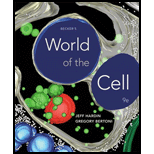
Concept explainers
Gasoline is highly combustible yet doesn’t burst into flame spontaneously in the presence of oxygen. Why not? How is the action of a match to promote this combustion reaction different from the action of a catalyst?
To explain: The reason behind the non-spontaneous combustion of gasoline after being present in contact with oxygen.
Introduction: The catalysts are those elements in a process which increases the rate of reaction. They are not consumed in a reaction but increase the reaction rate by decreasing the activation energy. The catalysts can be used again in any other reaction after their work is done in a particular reaction.
Explanation of Solution
Gasoline is a colorless fuel which is used in the “combustion engines.” The combustion of gasoline contributes to the release in the carbon dioxide gas. The part of oxygen in the reaction is to support the combustion of gasoline. The heat source in the reaction is from the fuel, there is no part of oxygen in the production of heat during the process. The rate of combustion is increased only when the oxygen is bind to the gasoline will expose in the environment. The oxygen possessed very less activation energy in this reaction because of that the combustion reaction is said to be non-spontaneous.
To explain: The variation in between the action of a match and a catalyst in the procedure of combustion reaction.
Introduction: The catalysts are those elements in a process which increases the rate of reaction. They are not consumed in a reaction but increase the reaction rate by decreasing the activation energy. The catalysts can be used again in any other reaction after their work is done in a particular reaction.
Explanation of Solution
When a process is taking place, the catalyst increases its rate of reaction. The process is not taking place because of the limiting activation energy of oxygen. When a match is used to initiate the process, the reaction takes place between the match and gasoline leading to the combustion of the gasoline. After the process is initiated the catalyst can increase the further rate of reaction.
Want to see more full solutions like this?
Chapter 6 Solutions
Becker's World of the Cell (9th Edition)
- Explain in a small summary how: What genetic information can be obtained from a Punnet square? What genetic information cannot be determined from a Punnet square? Why might a Punnet Square be beneficial to understanding genetics/inheritance?arrow_forwardIn a small summary write down:arrow_forwardNot part of a graded assignment, from a past midtermarrow_forward
- Noggin mutation: The mouse, one of the phenotypic consequences of Noggin mutationis mispatterning of the spinal cord, in the posterior region of the mouse embryo, suchthat in the hindlimb region the more ventral fates are lost, and the dorsal Pax3 domain isexpanded. (this experiment is not in the lectures).a. Hypothesis for why: What would be your hypothesis for why the ventral fatesare lost and dorsal fates expanded? Include in your answer the words notochord,BMP, SHH and either (or both of) surface ectoderm or lateral plate mesodermarrow_forwardNot part of a graded assignment, from a past midtermarrow_forwardNot part of a graded assignment, from a past midtermarrow_forward
 Biology (MindTap Course List)BiologyISBN:9781337392938Author:Eldra Solomon, Charles Martin, Diana W. Martin, Linda R. BergPublisher:Cengage Learning
Biology (MindTap Course List)BiologyISBN:9781337392938Author:Eldra Solomon, Charles Martin, Diana W. Martin, Linda R. BergPublisher:Cengage Learning Biology Today and Tomorrow without Physiology (Mi...BiologyISBN:9781305117396Author:Cecie Starr, Christine Evers, Lisa StarrPublisher:Cengage Learning
Biology Today and Tomorrow without Physiology (Mi...BiologyISBN:9781305117396Author:Cecie Starr, Christine Evers, Lisa StarrPublisher:Cengage Learning Biology 2eBiologyISBN:9781947172517Author:Matthew Douglas, Jung Choi, Mary Ann ClarkPublisher:OpenStax
Biology 2eBiologyISBN:9781947172517Author:Matthew Douglas, Jung Choi, Mary Ann ClarkPublisher:OpenStax Principles Of Radiographic Imaging: An Art And A ...Health & NutritionISBN:9781337711067Author:Richard R. Carlton, Arlene M. Adler, Vesna BalacPublisher:Cengage Learning
Principles Of Radiographic Imaging: An Art And A ...Health & NutritionISBN:9781337711067Author:Richard R. Carlton, Arlene M. Adler, Vesna BalacPublisher:Cengage Learning Concepts of BiologyBiologyISBN:9781938168116Author:Samantha Fowler, Rebecca Roush, James WisePublisher:OpenStax College
Concepts of BiologyBiologyISBN:9781938168116Author:Samantha Fowler, Rebecca Roush, James WisePublisher:OpenStax College





